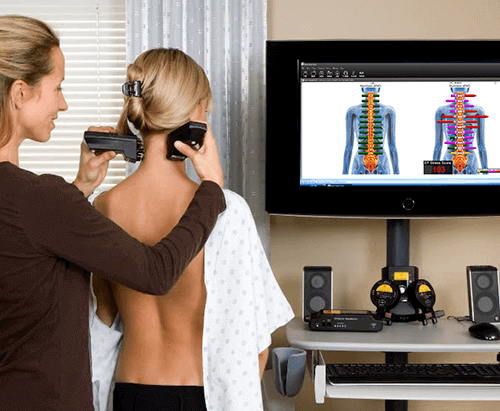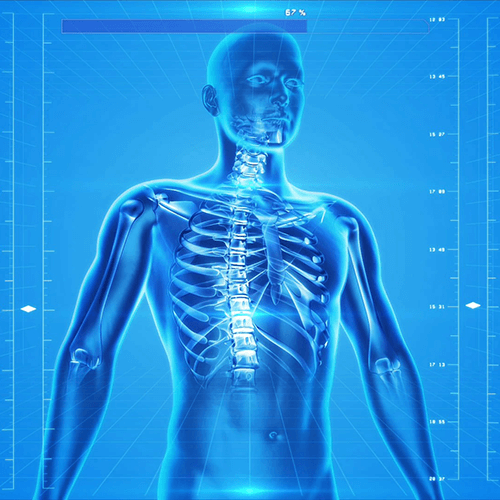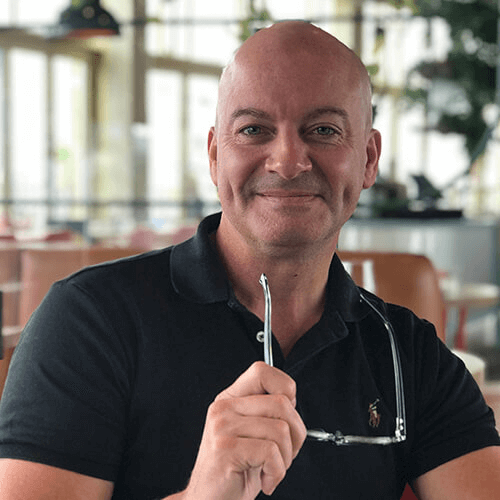
Tech neck and poor posture
The head and neck design allow for many movements including flexion and regular forward leaning. The challenge and consequences begin to occur when someone maintains a flexed or forward head posture position for extended periods of time. Cell phones, computers, desk jobs, and more sedentary living contribute to the growing number of people suffering from forward head posture syndromes and other detrimental health consequences.
Sitting for long periods of time takes a toll on the body. Head posture in comparison to the neck and shoulders influences so many other aspects of health and performance. Forward head flexion for long periods of time negatively impacts whole body function.
A 2017 study published in the Journal of Back and Musculoskeletal Rehabilitation, showed that forward head posture (FHP) decreases respiratory functions and increases respiratory accessory muscle activation. Forward head posture leads to high activation of superficial neck muscles, such as the sternocleidomastoid (SCM) and upper trapezius, which can lead to SCM breathing patterns, and commonly neck pain and fatigue due to not oxygenating the body well, rather than the much healthier diaphragmatic breathing associated with many health benefits. As forward head deviation got worse, the lung and neck muscle findings and measurements also got worse. Authors concluded the need for maintenance of correct head posture to prevent these functional reductions associated with long-term health degeneration.
Chiropractic care represents one of the most utilised healthcare interventions to help patients improve their posture, head position, and spinal health. Three proactive tips to improve posture, reduce the risk of forward head posture, and improve overall health and well-being include:
- Commit to regular Chiropractic care.
- Utilise proper sitting ergonomics to ensure technology and office tasks be done with the head and neck at eye level.
- Do not sit for extended periods of time. A 20 second break every 20 minutes is recommended to keep the spine and body moving.
Chiropractors take pride in educating their patients on the dangers of prolonged sitting and forward head posture while providing unique care which minimises the risk of poor spinal and postural health. The best health care plan involves a proactive approach to prevent disease and damage which hinders the body’s function and performance. Choose Chiropractic.
Phone and computer use linked to ‘horn like’ growth on back of skull
The title sounds like a tag line for a new movie or piece of artwork. New research states that permanent bone structure changes take place at the back of the skull as a result of extended amounts of time in a forward head posture position. Authors of the study attribute the cause of the increased amount of forward head posture to increased time on hand-held technology devices such as smartphones and tablets.
In 2018, research was published in the journal Scientific Reports, that evaluated x-ray findings of 1,200 subjects ranging from ages 18 to 86 years old. The small bump on the back of the skull is called the external occipital protuberance (EOP). It was found that an enlarged EOP was noted at higher incidence in younger adults who had greater degrees of forward head posture. The small horn-like growth at the back of the skull appeared to be caused by increased amounts of stress on the muscles, tendons, and ligaments in that area due to forward head posture. As stress loads increase in ligaments, muscles, and tendons for long periods of time, bony deposits form within the body as a protection mechanism.
An increasingly sedentary lifestyle accompanies massive amounts of time spent looking forward and down at devices. An adaptive process takes place within the body to alleviate the added weight and pressure being placed on the back of the head and neck. An incredible amount of strain prompts bone to infiltrate the tendons, as muscles at the back of the skull work to prevent the head from falling toward the chest.
Weight added to the spine dramatically increases when forward head flexion increases at varying intervals. A 2014 study published in the journal, Surgical Technology International, found that “an adult head weighs 10 to 12 pounds in the neutral position. As the head tilts forward the forces seen by the neck surges to 27 pounds at 15 degrees, 40 pounds at 30 degrees, 49 pounds at 45 degrees and 60 pounds at 60 degrees.”
The extra stress from forward head posture on the neck and skull produce significant effects. Commentary focuses on the shocking presence of the bone spur but the protrusion registers as the smallest of concerns. The process involved in the bone spur formation indicates a danger and concern far greater than anything superficial. Improper head and neck configuration signify abnormalities in the nervous system and dangerous long-term outcomes for a person’s overall health, function, and performance.
These bone spur formations take a long time to develop. Individuals who suffer from EOP spurs began applying stress and strain to the head and neck area during the early stages of childhood. The length of time needed to form a bone spur suggests that sustained improvement in posture and head positioning prevent further degenerative change and allows for correction and healing. Chiropractic care plays a vital role in helping reduce stress and abnormal spinal positioning which promote disease, discomfort, and long-term health concerns. Research continues to alert people to the dangers of overusing technological devices as they pertain to deteriorating effects on the head, neck, and spine. Chiropractic helps relieve the damaging effects of forward head posture while providing education and care plans for the sustained health and function of the neck, spine, and nervous system.
References:
*J Back Musculoskelet Rehabil. 2017 Aug 3;30(4):711-715. Correlation between forward head posture, respiratory functions, and respiratory accessory muscles in young adults.
*Surg Technol Int. 2014 Nov;25:277-9. Assessment of stresses in the cervical spine caused by posture and position of the head.
*Scientific Reports. 2018. Article number: 3354. Prominent exostosis projecting from the occipital squama more substantial and prevalent in young adult than older age groups
*Surg Technol Int. 2014 Nov;25:277-9. Assessment of stresses in the cervical spine caused by posture and position of the head.
Receive your complementary spinal scan and book online now.
Get your detailed consultation and NASA-Technology Scan.


